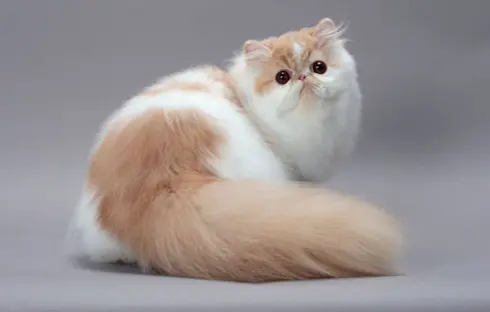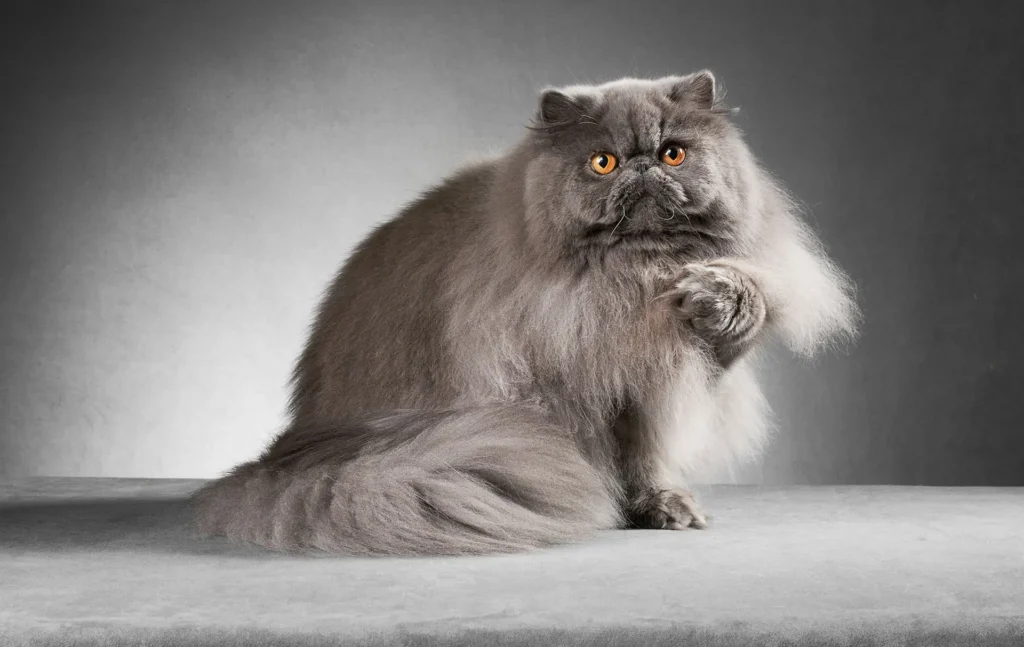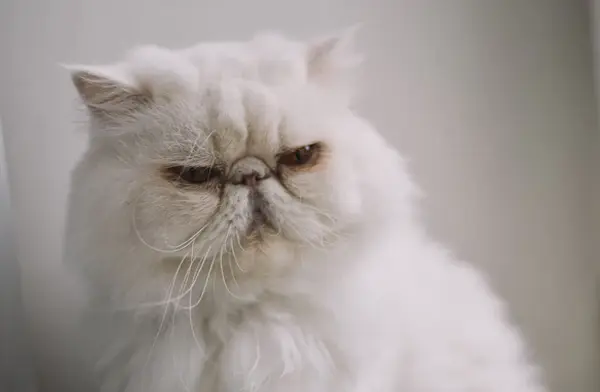What are the grooming requirements for a Persian cat?

Introduction
A. Brief overview of Persian cats
Persian cats are beloved for their luscious, lengthy fur and gentle nature. They have distinctive round faces and big, expressive eyes. Originally from Persia (modern-day Iran), they have been cherished pets for centuries.
B. Importance of grooming for Persian cats
Grooming is super important for Persian cats because of their long, thick fur. Without regular grooming, their fur can get tangled and matted, which can be uncomfortable for them. Grooming also helps to keep their fur free from dirt, debris, and pesky knots.
C. Purpose of the article
The purpose of this article is to help cat owners understand why grooming is essential for their Persian cats and to provide tips and advice on how to properly groom them. By following these grooming tips, owners can ensure that their Persian cats stay happy, healthy, and looking their best.

Understanding the Persian Cat Breed
A. Description of Persian cat breed characteristics
Persian cats are fluffy and have big, round faces with large eyes. Their fur comes in many colors, like white, gray, and brown. They’re known for being calm and gentle companions.
B. Historical background of Persian cats
Persian cats have a long history, originating from Persia (now Iran) centuries ago. They were cherished by royalty and admired for their beauty. Over time, they became popular pets worldwide.
C. Unique grooming needs due to breed traits
Because of their long, thick fur and their tendency to develop mats easily, Persian cats need special grooming care. Their fur requires regular brushing to prevent tangles and mats, and they may also need occasional baths to keep their coats clean and shiny. Proper grooming helps Persian cats stay comfortable and healthy.

Coat Care
A. Importance of maintaining the Persian cat’s coat
Keeping a Persian cat’s coat in good shape is important. Their long, fluffy fur can easily get tangled, which can be uncomfortable for them. Regular grooming helps to keep their coat healthy and prevents mats from forming.
B. Types of Persian cat coats (e.g., long-haired, flat-faced)
Persian cats come in different coat types, but most have long hair. Some have flat faces, which can affect how their fur grows and needs to be groomed. Understanding your cat’s coat type can help you choose the right grooming routine.
C. Recommended grooming tools and products for coat care
To take care of a Persian cat’s coat, you’ll need some special tools. A good quality brush with soft bristles is essential for removing tangles and keeping their fur smooth. You might also need a comb to get out any stubborn knots. There are also shampoos and conditioners made specifically for cats that can help keep their coat clean and healthy.
Brushing Techniques
A. Frequency of brushing sessions
Brushing your Persian cat’s fur should be done regularly to keep it healthy and free from mats. Aim for at least a few times a week, but daily brushing is even better, especially for long-haired Persians.
B. Proper brushing techniques for different coat types
When brushing your Persian cat, start with a gentle approach. Use a soft-bristled brush and work through their fur in small sections, going from the roots to the tips. Be careful around sensitive areas like the belly and legs, and adjust your technique based on your cat’s coat type.
C. Tips for managing tangles and mats effectively
Tangles and mats can be a challenge, but there are ways to manage them. If you encounter a tangle, try using your fingers to gently tease it apart before using a brush or comb. For stubborn mats, you may need to carefully cut them out with scissors, but be very cautious not to cut your cat’s skin. Regular grooming and keeping your cat’s fur clean can also help prevent tangles from forming in the first place.
Bathing and Hygiene
A. Importance of regular bathing for Persian cats
Bathing is important for Persian cats to keep their coat clean and free from dirt and oils. It also helps to prevent skin issues and keeps them smelling fresh. However, Persian cats may not need baths as frequently as other breeds, so it’s essential to find the right balance.
B. Suitable bathing products and techniques
When bathing your Persian cat, use a gentle cat shampoo specifically formulated for sensitive skin. Make sure to dilute the shampoo properly and rinse thoroughly to avoid leaving any residue. Use lukewarm water and be gentle to avoid stressing your cat out during bath time.
C. Managing facial hygiene, especially around the eyes and nose
Persian cats’ flat faces can make them prone to tear staining around their eyes and nose. To keep their face clean, gently wipe away any discharge with a damp cloth. Be careful not to irritate their eyes or nose and use a separate cloth for each eye to prevent spreading any bacteria. Regular grooming and keeping their face clean can help prevent tear stains and keep your Persian cat looking and feeling their best.
Nail Care
A. Understanding the importance of nail trimming for Persian cats
Trimming your Persian cat’s nails is important to keep them from getting too long and sharp. Long nails can be uncomfortable for your cat and may even cause injury to themselves or others.
B. Techniques for safely trimming Persian cat nails
When trimming your cat’s nails, make sure to use special cat nail clippers. Hold your cat securely but gently, and only trim the very tip of each nail to avoid cutting the quick, which is a sensitive part containing blood vessels and nerves. If you’re unsure, it’s best to ask your veterinarian or a professional groomer for guidance.
C. Alternatives for controlling nail length and sharpness
If your Persian cat doesn’t like having their nails trimmed, or if you’re uncomfortable doing it yourself, there are alternatives. Providing scratching posts or pads can help naturally file down your cat’s nails as they scratch. You can also use nail caps, which are small covers that fit over your cat’s nails to prevent them from scratching surfaces or people. These alternatives can help keep your cat’s nails at a safe length without the need for regular trimming.
Ear and Eye Care
A. Importance of routine ear and eye examinations
Checking your Persian cat’s ears and eyes regularly is super important. It helps you catch any problems early and keeps your cat healthy. Routine check-ups can prevent issues from getting worse.
B. Gentle cleaning methods for Persian cat ears and eyes
When cleaning your cat’s ears and eyes, be gentle. Use a soft, damp cloth to wipe away any dirt or discharge from their ears. For their eyes, use a separate damp cloth to gently wipe away any gunk from the corners. Avoid using cotton swabs or harsh chemicals, as these can hurt your cat.
C. Signs of common ear and eye issues to watch for during grooming
During grooming, keep an eye out for signs of ear or eye problems. If you notice redness, swelling, or unusual discharge in their ears, it could be a sign of infection. Similarly, if you see excessive tearing, squinting, or cloudiness in their eyes, it’s best to consult your vet. Catching these issues early can prevent discomfort and keep your Persian cat happy and healthy.
Dental Care
A. Importance of dental hygiene for Persian cats
Dental hygiene is crucial for Persian cats to keep their teeth healthy and prevent problems like gum disease and tooth decay. Neglecting dental care can lead to pain and discomfort for your cat.
B. Methods for maintaining oral health, including brushing teeth
To maintain your Persian cat’s oral health, brushing their teeth regularly is essential. Use a soft-bristled toothbrush and cat-friendly toothpaste to gently scrub their teeth and gums. Start slowly and be patient, as it may take time for your cat to get used to the routine.
C. Signs of dental problems and when to seek veterinary assistance
Watch out for signs of dental problems during grooming, such as bad breath, swollen gums, or difficulty eating. If you notice any of these signs, it’s essential to seek veterinary assistance promptly. Your vet can perform a dental examination and recommend treatment to keep your cat’s teeth and gums healthy. Regular dental care can prevent serious dental issues and ensure your Persian cat has a happy, pain-free smile.
Environmental Considerations
A. Creating a grooming-friendly environment for Persian cats
Make sure your grooming area is calm and quiet, with no loud noises or distractions. Provide soft towels or mats for your cat to sit on during grooming, and keep grooming supplies within easy reach.
B. Minimizing stress during grooming sessions
Persian cats can get stressed during grooming, so it’s essential to create a calm and relaxed atmosphere. Speak softly and reassuringly to your cat, and give them treats or rewards to associate grooming with positive experiences. Take breaks if needed and never force your cat to endure grooming if they’re too stressed.
C. Importance of regular grooming routine for overall well-being
Having a regular grooming routine is vital for your Persian cat’s overall well-being. It helps them stay clean, comfortable, and healthy. Regular grooming also strengthens the bond between you and your cat, as it’s a time for affection and care. By creating a grooming-friendly environment and minimizing stress, you can ensure that grooming sessions are enjoyable for both you and your Persian cat.
Conclusion
A. Recap of grooming requirements for Persian cats
To summarize, Persian cats need regular grooming to keep their long fur free from tangles and mats. This involves brushing their coat, cleaning their ears and eyes, trimming their nails, and maintaining their dental health.
B. Emphasis on the bond formed through grooming
Grooming isn’t just about keeping your Persian cat looking good; it’s also an opportunity to bond with them. Spending time grooming your cat strengthens your relationship and helps them feel loved and cared for.
C. Encouragement for responsible grooming practices for Persian cat owners
As a responsible Persian cat owner, it’s essential to make grooming a regular part of your routine. By providing a grooming-friendly environment, minimizing stress, and following proper grooming techniques, you can ensure that your Persian cat stays happy, healthy, and beautiful for years to come.
People also ask
How should a Persian cat be groomed?
Regularly brush their fur, clean ears and eyes, trim nails, and brush teeth.
Do Persian cats need haircuts?
Yes, especially if their fur gets tangled or matted.
Is it OK to shave my Persian cat?
Shaving is generally not recommended unless advised by a vet.
What are the basic needs of a Persian cat?
Regular grooming, proper nutrition, love, and a safe environment.
How often do Persian cats need haircuts?
It depends on the length of their fur and grooming routine.
Do Persian cats need to brush their teeth?
Yes, to prevent dental issues and keep their mouth healthy.



